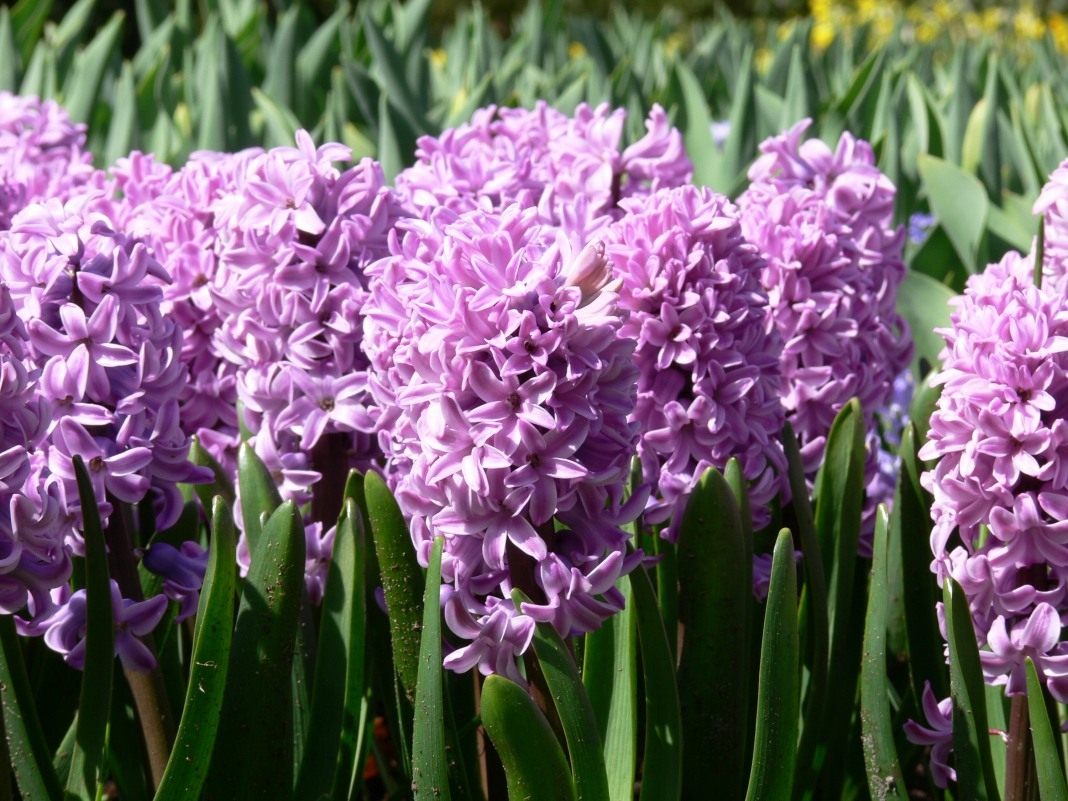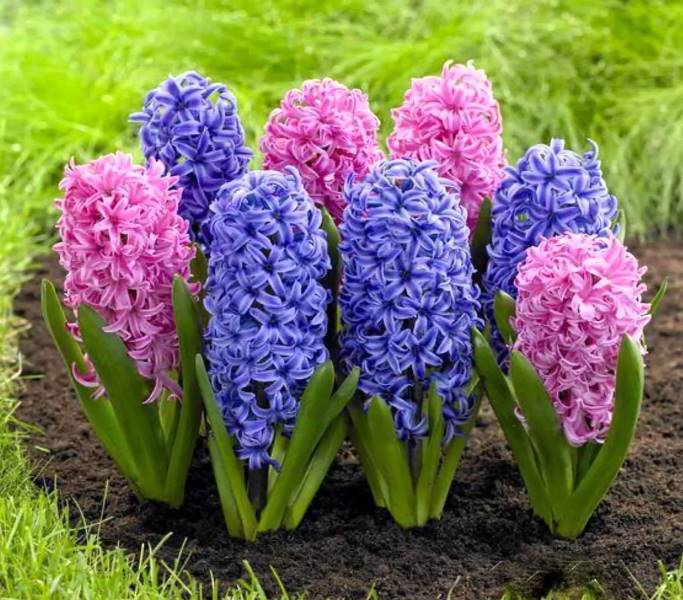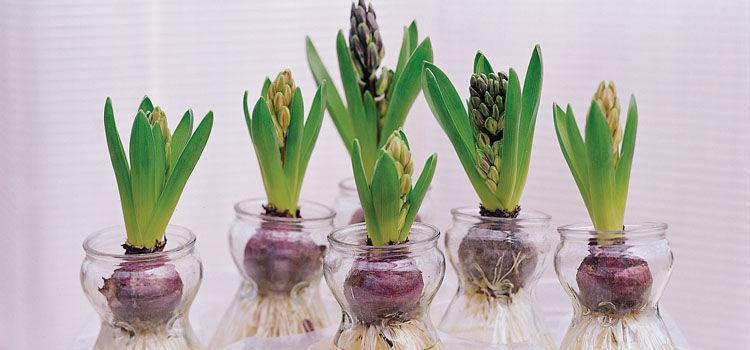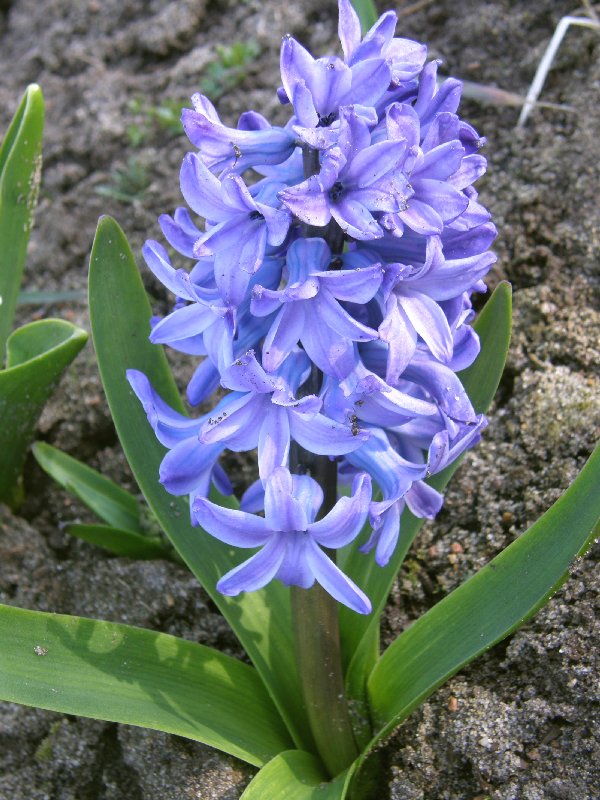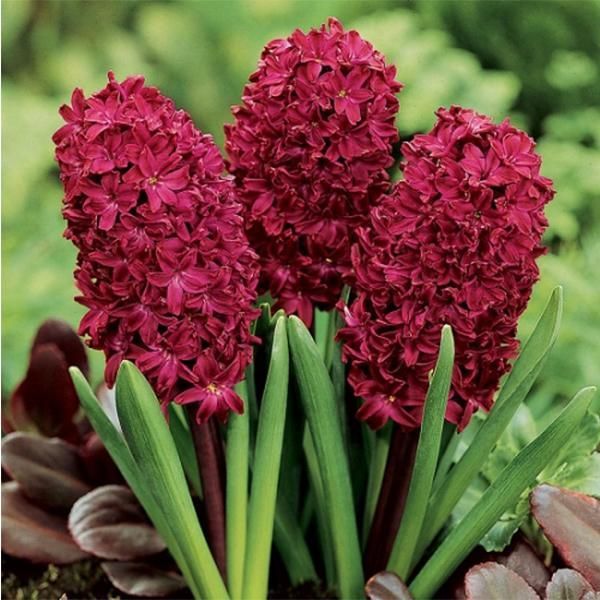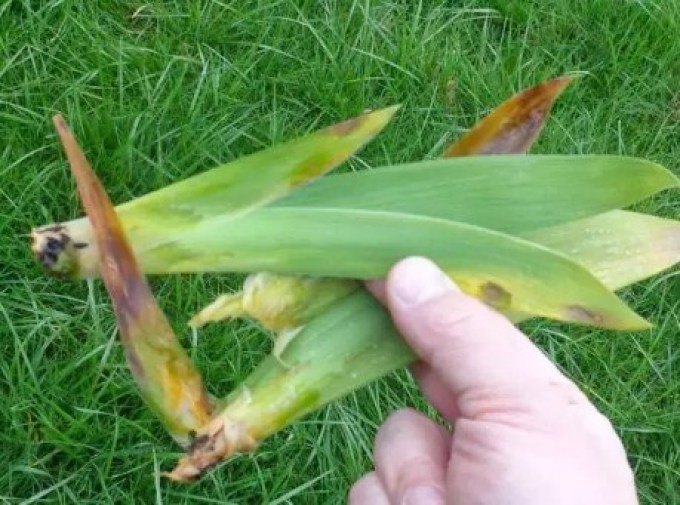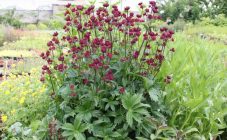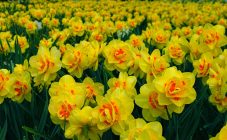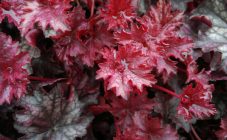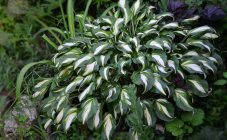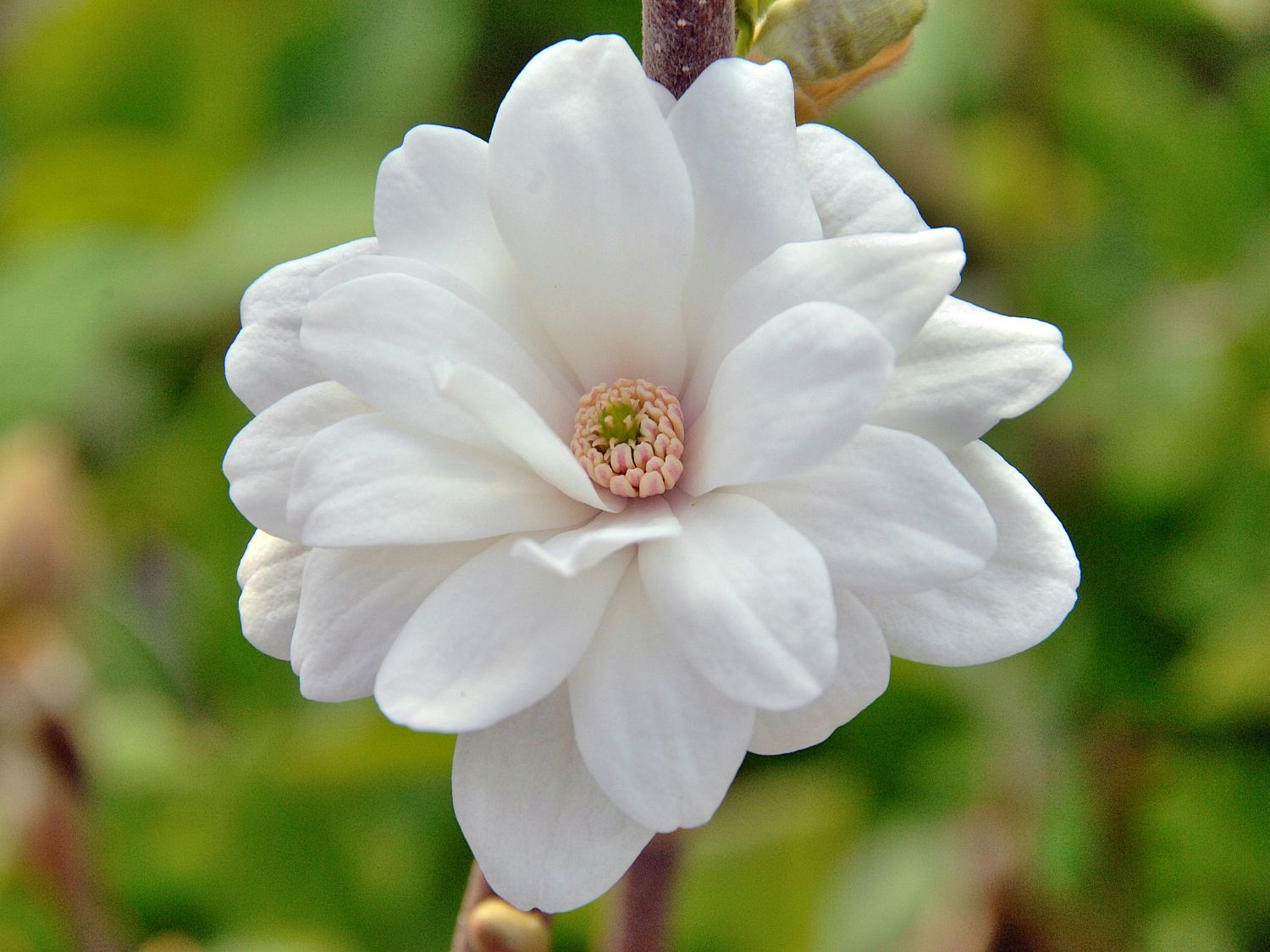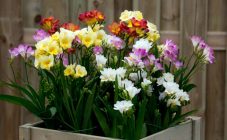Content:
Hyacinth is a genus of perennial bulbous plants belonging to the Hyacinth family. Translated from Latin, the name means "rain flower". The hyacinth stands out for its compact size and long flowering, accompanied by a rich floral aroma.
Distribution history
The name of the hyacinth was given on the basis of the name of one of the characters in the myths of Ancient Greece. A very attractive youth, Hyacinth was the lover of the god Apollo. While teaching Hyacinth to throw a disc, the God of the Wind, in love with Apollo, took the flying disc to the head of the young man. After his death, Apollo created an extraordinary-looking flower.
The hyacinth flower was widely spread in Greece, Asia Minor. In eastern countries, these flowers have long enjoyed special attention. In Europe, the plant spread in the 15th century.
However, it was not until 1543 that the bulbs were transported from the countries of Asia Minor to the city of Padua in northern Italy, famous for its botanical garden. I fell in love with the hyacinth plant for the unusual beauty of inflorescences of all kinds of colors.
What is hyacinth? In Russia, the word "hyacinth" has been known since the early 18th century. Its borrowing comes from the Romans, "Hyacinthus", or saber, means the similarity of leaves with military weapons.
Biological information
What does hyacinth look like? All members of the genus meet the following criteria:
- leaves are directed upward;
- the stem is erect;
- an abundance of flowers;
- conical or cylindrical brush;
- flowers should be placed horizontally, not hanging;
- the presence of a subtle persistent aroma.
Due to its compact size, the plant can be grown at home.
Useful properties of hyacinth
Only hyacinth flowers are used. The collection should be carried out during the flowering period. Gently collecting and spreading the inflorescences, it is necessary to dry the raw materials in a ventilated place protected from the sun.
After drying, the resulting material can be stored for two years in a linen bag in a dry place. In addition to drying, you can obtain essential oil from flowers by extracting the oil with petroleum ether.
The essential oil has pronounced medicinal properties. These include antiseptic, bactericidal, anti-inflammatory and sedative effects. In addition, hyacinth oil is used as a disinfectant for wounds. Possessing an analgesic effect, it is successfully used in the treatment of suppuration and skin manifestations.
A clear anticonvulsant and analgesic property has been noted for physical injuries and headaches. You can get rid of neurological disorders and calm the nervous system, improving the quality of sleep, by conducting aromatherapy sessions.
Making an alcoholic tincture can relieve joint pain by rubbing the painful area. According to the surviving data of traditional Chinese and Indian medicine, hyacinth oil is able to regulate the menstrual cycle, removing pain and spasms of smooth muscles.
Plant characteristic
With differences in subspecies, the average size of the hyacinth ranges from 20-60 cm. The narrowed linear type of leaves has a growth point slightly higher than the root system. The peduncles of plants have no leaves. Fleshy, elongated, at the top they have an inflorescence formed by small flowers. This spike-like shape is called "sultan".
The elongated leaves have a bright emerald color. Being a grooved form, in length they can reach 15-20 cm. No more than four pairs of such leaves grow on one plant.
Flowers can be of different colors: from white to purple. Simple, with one row of stamens, have a strong aroma. The perianth has a bright color, looks like a bell-shaped funnel with protruding lobes. One inflorescence is formed from at least 30 flowers. They can be tubular, bell-shaped or funnel-shaped.
Flowering is observed in May for two weeks. Pollination of flowers occurs with the help of intermediaries - pollinating insects. After pollination, the fruit is formed - a three-celled capsule containing 2 seeds covered with a fragile skin. Under gusts of wind, the capsule breaks (so it is with a fragile structure), and the seeds are spread to new territories, taking root and giving new plants.
The bulb of hyacinths consists of dense lower leaves that completely occupy the circumference of the bottom of the bulb. The flowering stem is an immediate continuation of the bottom. At the end of the flowering process, the peduncle, together with the leaves attached from below, dries up. At this time, a bud is formed in the axil of the leaf located on top, growing and becoming a young bulb, the flowering of which will be observed next year. In this bulb, a young stem with flowers located on it is formed in a compact form.
In addition to the formation of a young rudimentary stem, weak small bulbs, called "babies", are formed in the axils of the remaining leaves. They can be separated from the parent plant for planting. Such bulbs will begin to bloom in the third year after separation.
Characteristics of species and varieties
Initially, the genus of hyacinths included more than 30 species, but after the revision of the classification of plants, a large number of them were assigned to other classification groups. To date, 3 species belong to the genus of hyacinths.
The most common species is oriental hyacinth. Its genetic material is at the heart of the work of breeders. Wild forms grow in the territories of Turkey, Lebanon, Syria. The plant has a thin peduncle with loosely arranged flowers of blue, pink, yellowish-white flowers. Like all representatives of the species, the oriental hyacinth has a bright pleasant aroma.
Thanks to the work of breeders, there are now many varieties of hyacinth. Most often, the oriental hyacinth is taken as a basis.
Unlike other flowering plants, wild hyacinths are not clearly differentiated into groups. The classification is carried out on the basis of the flower shape: simple, double, multi-flowered; by flowering period: early, middle and late; by color of flowers.
Common varieties
The most commonly used classification of varieties by color of inflorescences.
Hyacinths with white flowers:
- Aiolos is a medium-sized plant, 18-28 cm tall, has a lush cylindrical inflorescence. The flowers are large, up to 4 cm in length, wide, with bent perianth lobes;
- Carnegie (Carnegie) - early variety, according to the description has wide flowers, 18-26 cm in height. The variety was bred in 1863. To this day, it remains on the list of popular among the abundance of white hyacinths.
List of pink hyacinths:
- Pink Surprise is a commercially grown variety that is resistant to adverse conditions. Flowers can be up to 4.5 cm in size;
- Pink Pearl (Pink Pearl) - differs in a purple tint of medium density inflorescences.
Blue and blue hyacinths:
- Blue Star - a wide inflorescence of blue large flowers pleases the eye for 20-25 days;
- King of the Blues is a late variety. Blue-violet flowers with narrow, long, bent pericarp were bred back in 1865.
In addition to those listed, there is a wide variety of yellow, carmine-red, purple-lilac varieties widely distributed on the market. Hyacinth Mix, which is a set of plant bulbs differing in color, is popular.
Draws attention to the purple color of Woodstock hyacinth (Woodstock). Lush inflorescences with a ruby shade of rich lilac color will decorate any flower bed. Yellowstone hyacinth is light yellow in color, blooms at the beginning of the season with especially fragrant inflorescences. The Gipsy Queen hyacinth is distinguished by its unusual large peach-colored flowers. Hyacinth Jan Bos (Jan Bos hyacinth) has lush dark crimson inflorescences. A varietal variety of purple hyacinth Vurbak stands out with a lilac tint of flowers. Hollyhock belongs to the red hyacinths of a large-flowered perennial variety. The Splendid Cornelia variety pleases with its intense lilac color.
Features of planting and care
Hyacinth is a capricious and demanding plant for growing conditions. For growing in soil you need:
- neutral values of the soil reaction;
- the composition of the soil mixture should include sod, leafy soil and baking powder;
- make a drainage layer, since the plant does not tolerate waterlogging of the soil;
- a well-lit place is necessary for planting;
- the site must be fenced off from the effects of strong winds;
- take care by making regular watering;
- it is unacceptable to use organic substances as any fertilizers.
At the end of the growing season, the aerial part of the plant dies off. During this period of dormancy, the buds of shoots and daughter bulbs are formed. In central Russia, it is recommended to dig up the bulbs annually in June-July when the leaves begin to turn yellow. The collected bulbs must be carefully cleaned of clods of earth, cut off the remaining leaves and dried at home for 2-3 days. Having cleared of dried scales, it is required to separate the children and set aside the material for storage for 90-95 days.
It is necessary to plant the bulbs in the fall at the end of September in open ground. Having prepared the site for planting in advance, you need to add compost or peat to the hole. Large bulbs need to be deepened into the soil by 15-18 cm, small ones by 5 cm. When frost occurs, the planting should be covered with dry peat, humus, sawdust or spruce branches.
The first fertilizers should be applied immediately after the sprouts appear. For this, ammonium nitrate is used at the rate of 20-30 g per 1 sq. meter. After the buds swell, a complex fertilizer of nitrate, 40 g of superphosphate, 30 g of potassium chloride is required. After the flowers have fallen into the soil, you need to add 40 g of superphosphate and potassium chloride or a complex of potassium magnesium.
Diseases and pests
Withering and stunted growth can be caused by hoverflies and flower flies, gnawing at the scales of the bulb. For the treatment of plants, drugs Mukhoed, Atara and others are used. Aphids can harm leaves and inflorescences. An infected flower can be treated with aphicides such as Fitoferms and Akarin. Root system damage is often caused by bears and root mites. To prevent infestation of the bulbs, you can disinfect them before planting by briefly dipping them into hot water.
If stains, necrosis tissues, a putrid odor are found, a viral or bacterial infection should be assumed. The only effective remedy in this case is the destruction of the plant with the replacement of the used land.
Summarizing the above, we can conclude that the abundance of variations in the colors and sizes of plants opens up a wide scope for choosing a hyacinth variety suitable for the interior of a garden plot or a house. In addition to the decorative function, hyacinth can be grown for harvesting for medicinal purposes. The rich aroma and bright colors will not leave anyone indifferent and will decorate any landscape composition.
